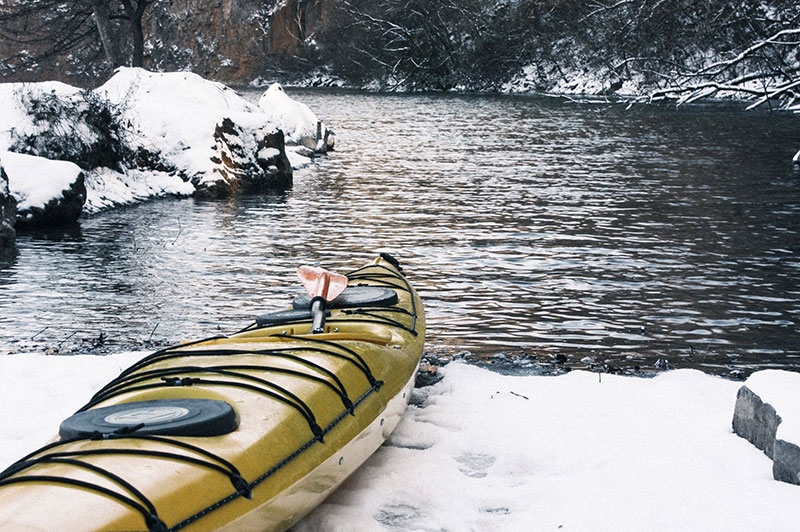Cold Water Safety Tips: How to Survive an Icy Dip

Just because it’s winter, doesn’t mean you have to put your kayak away. Winter kayaking can be a bit more dangerous, but with the proper gear and preparation, extremely enjoyable. Every time you head out on the water, there is a chance you could end up in the water. If you are headed out into cold water, which is estimated at about 70 degrees and under, you should be prepared to handle cold water immersion.
What to do in the Water
If you find yourself in the water, you are going to be immediately faced with panic, shock and disorientation. You will need to fight through these, regain composure and formulate a plan if you are going to survive.
Your main objective is to get yourself back out of the water as quickly as possible. Kayaks, canoes and many other small boats can be righted and re-entered. If the boat has capsized and cannot be made right, climb on top of it. This is something you should practice if you plan on cold water kayaking.
If you cannot get back into or on top of your kayak, you will need to decide to either swim to safety or wait for rescue. Swimming will be difficult and rob you of your body heat much faster. Consider how far you will need to swim before taking off. Few people can swim more than a mile in cold water.
If you are unable to self-rescue, all efforts should be focused on conserving energy and body heat. Even treading water will greatly increase your heat loss. Air trapped in clothing can provide buoyancy as long as you remain still. Learn and practice the proper Heat Escape Lessening Posture (HELP). If you are not alone, huddle together facing each other to maintain body heat.
Be Prepared
With proper preparation, training and practice, you can enjoy your love of kayaking year-round and see some amazing sights. Your kayak and equipment should be in top condition. Know how to dress in several light layers. Always wear a personal flotation device (PFD) and make sure it’s properly fastened. You will not be able to do it once your hands are cold and numb. Check the weather forecast before heading out and always tell someone where you are going and when you expect to return.
Custom Kayak Storage Solutions
One way you can keep your kayak in top condition is with proper storage. We’ve helped many customers design their perfect kayak storage. For specific questions, inquiries, or customer orders, contact Log Kayak Rack at 1-715-543-2006.
